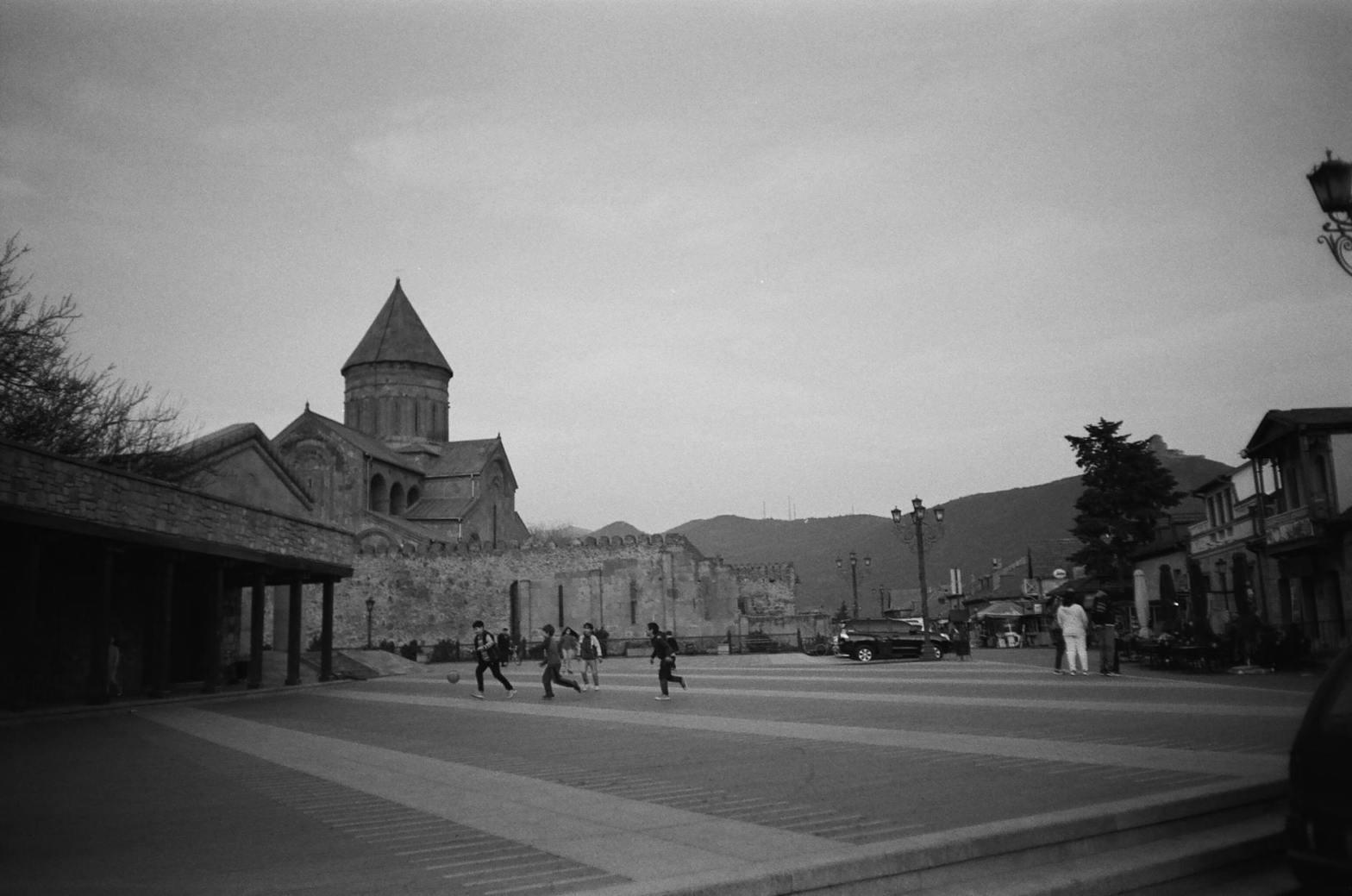Mtskheta was the ancient capital of Kartli (also known as the Kingdom of Iberia or Iveria), the East Georgian Kingdom from the 3rd century BC to the 5th century AD. The church authorities proclaimed Christianity as the official religion of Georgia here in 337. Mtskheta remains the headquarters of the Georgian Orthodox and Apostolic Church.
Mtskheta is at the confluence of the Aragvi and Mtkvari Rivers, around 20 kilometres northwest of Tbilisi. This city is best seen from the Jvari Monastery on an outcrop opposite the confluence.
According to traditional accounts, at this location in the early 4th century, St Nino, a female evangelist credited with converting King Mirian III of Iberia to Christianity, erected a large wooden (or vine) cross on the site of a pagan temple. The cross could reportedly work miracles and therefore drew pilgrims from all over the Caucasus. A small church was erected over the remnants of the wooden cross around 545 AD during the rule of Guaram I, and named the “Small Church of Jvari”. This church is still there next to the main church. The small church soon became overcrowded – it was a popular pilgrimage site – and the present building, or “Great Church of Jvari”, built between 590 and 605 by Guaram’s son Erismtavari Stepanoz I, became the principal place of worship.
The church has two entrances, from the north and from the south. The building has the shape of a cross, from east to west, with each arm ending in a semicircular apse. These four apses in each of the cardinal directions make the Jvari church an early example of a tetraconch.
Nowadays, Jvari Monastery is also a very popular destination for tourists, so it’s a good idea to get to the monastery early and admire the view of Mtskheta before looking around the interior.
The Sveti Tskhoveli Cathedral of the Twelve Apostles complex in the centre of Mtskheta includes the cathedral church, the palace, and the gates of the Katolikos Melchizedek that date from the 11th century, built on the site of earlier churches dating back to the 5th century.
This cathedral was built on the site of the palace of the kings of Iberia and the derivation of the name is fascinating. Elias bought a piece of Christ’s crucifixion robe for the palace. Elias’s sister Sidonia died of joy clutching the piece of cloth and held it so tightly that it had to be buried with her. In the 4th Century, wood from the cedar tree that grew out of her tomb was used to build St Nino’s first church at the site. St Nino’s prayers brought down one column that had been hovering in the air. Sveti Tskhoveli means “Life Giving Column”.
